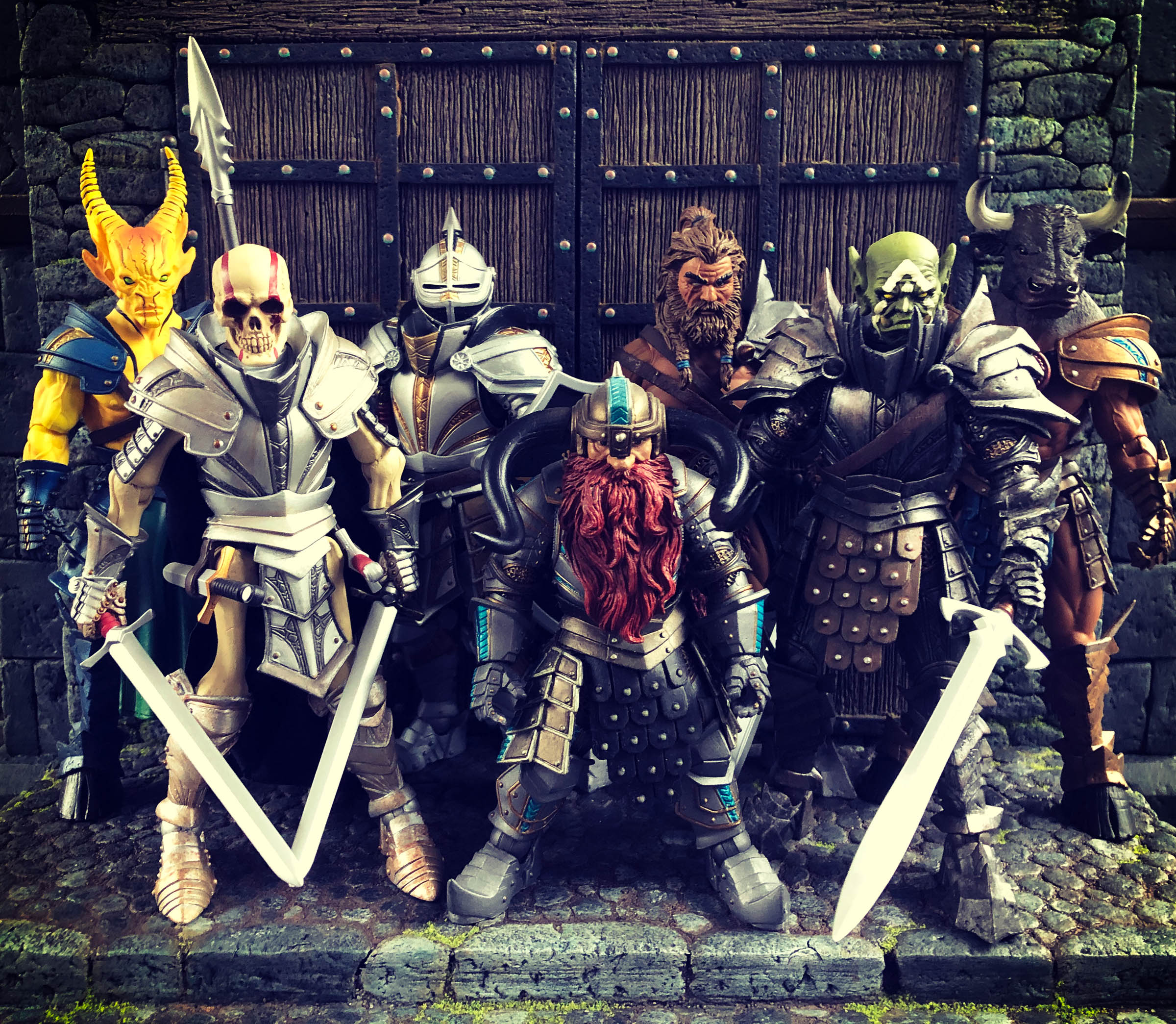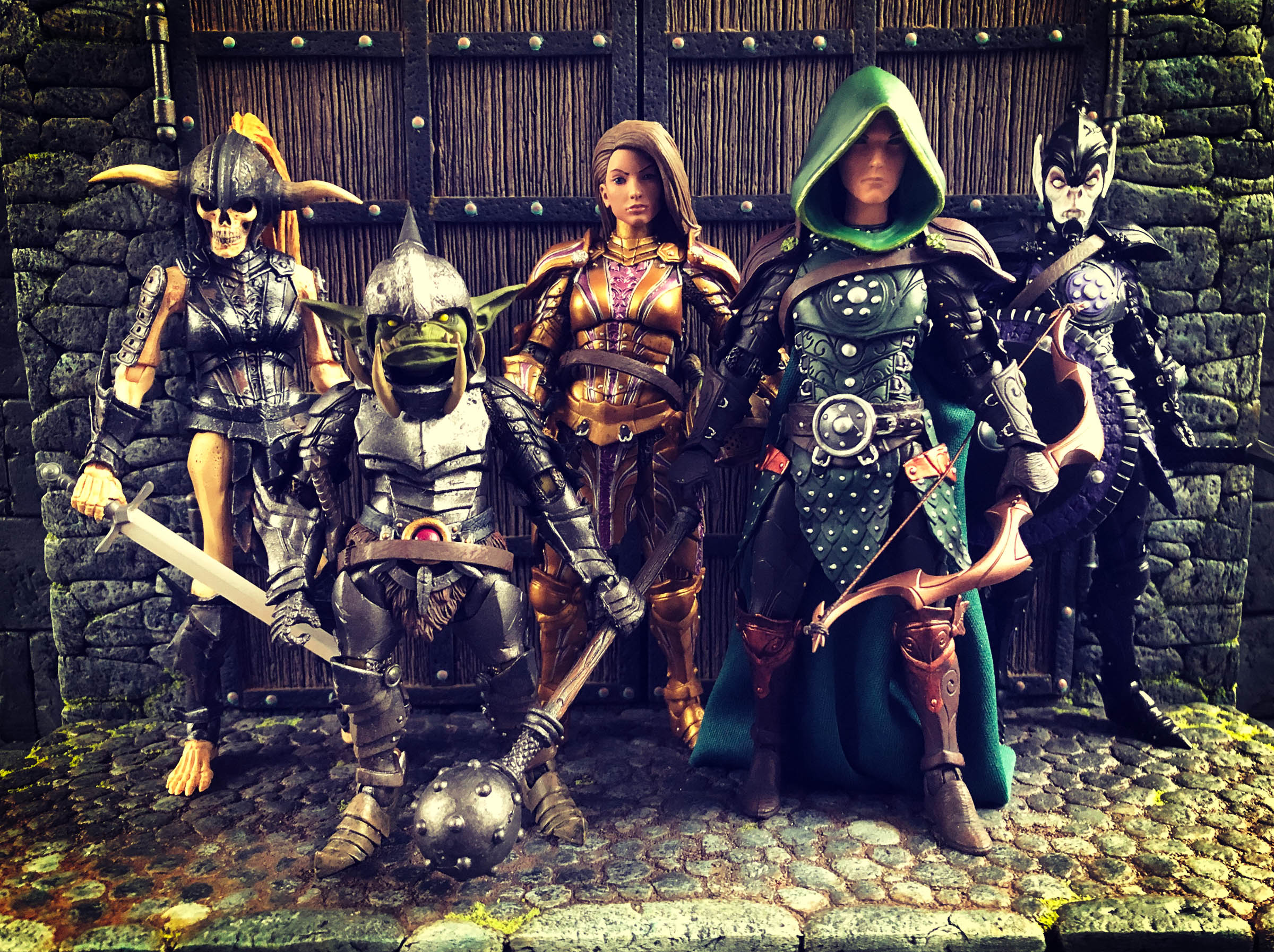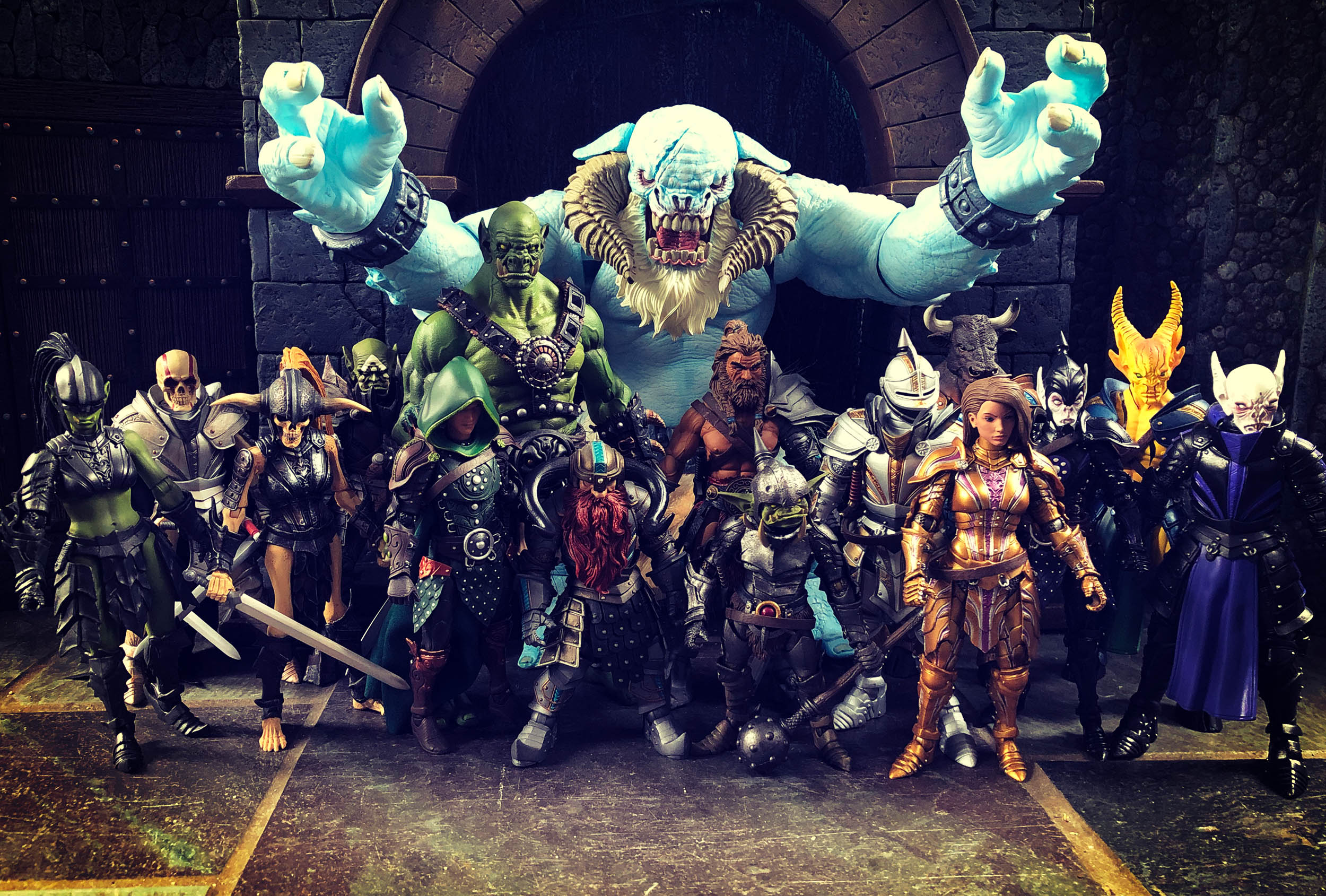As you start digging into the Mythic Legions line and engaging in conversations in the community, you will undoubtedly hear fellow fans use the phrases “1.0” and “2.0” to describe some of these figures. You may start to wonder what these terms mean in relation to the line and what the differences are between these types of figures. We will address these differences in the “Frequently Asked Questions” article!
The Waves that Started It All
The Mythic Legions line kicked off in 2015 with a very successful Kickstarter. That wave included a wide range of character types - from knights, to dwarves, to orcs, to demons and more. While there were plenty of unique heads in that first wave, there were only 3 kinds of torsos, a few different arms and legs options, and a variety of armor parts including a few different each of the pauldrons, faulds, and loin pieces. The wide range of figure types offered were all built by creatively using a limited library of parts – something that would become a hallmark of the Mythic Legions line!

The second wave of Mythic Legions figures that were offered became known as “Mythic Legions 1.5”, and while the third wave was eventually dubbed “Covenant of Shadows”, it was called “1.75” by Mythic fans before that official name was revealed. These designations led to the first wave of toys being called “1.0” retroactively, and as Four Horsemen Studios prepared to launch a big update to the line with a new Kickstarter and the promise of new additions to the parts library, the fanbase began to refer to that coming wave as “Mythic Legions 2.0”.
Enter the Advent of Decay
We know now that the second Mythic Legions Kickstarter was for the epically large “Advent of Decay” wave of figures, clocking in at 43 total figures plus a handful of weapons packs! This Advent of Decay wave truly did update the parts library for the line, introducing whole new body types that allowed for the creation of smaller and more slender characters including females, elves, and goblins. These are the parts that are referred to as “2.0 pieces.”

One thing that confuses many people is that the Advent of Decay line, while dubbed 2.0 and introducing those new parts, also contained many figures that used parts from the original library. Figures like Boariorr, B’alam, Hagnon, and Brother Mandibulus are just a few of the characters that were made available in Advent of Decay which used all “1.0-style” pieces. You will sometimes see new fans wonder if the 1.0-style parts in Advent of Decay are the same pieces as those from earlier waves (they are), and they will question which parts are compatible with what from a customizing standpoint. Here’s what you need to know in regards to parts compatibility.
Defining the Parts
The style of figure, 1.0 or 2.0, is determined by the parts themselves, not solely the wave in which they appeared. Every figure prior to Advent of Decay used only 1.0 parts, but from Advent of Decay forward, every wave was a mix of figures, some which used 1.0 parts and others which were 2.0 parts.
So to date there have essentially been two major releases of body parts – the initial Kickstarter wave and the Advent of Decay Kickstarter. It is worth noting that this designation is for the standard figures only. This designation does not include the larger figures like the Trolls, Ogres, and Horses.
The initial Kickstarter, or the “1.0 wave”, gave us the larger body styles and all these parts are compatible with each other, even the smaller-statured dwarves! While the dwarf figures do stand noticeably shorter than the knights, skeletons, and other figures released for 1.0, this is because their leg pieces are shorter, as are their lower arms – but those pieces all use the same connectors as the ones from the other 1.0 Legions, so you can swap arms, legs, torsos, armor parts, heads and more across these figures. Check out our article on “Popping apart Mythic Legions figures” to see an example of a 1.0-style Templar Knight broken down into individual pieces. That same article will also show a 2.0 figure in a Goblin Legion Builder.
As stated previously, the smaller 2.0 figures included the females, elves, and goblins. There is also a 2.0 style male vampire and a skeleton, two races that were also part of 1.0, so there is some nice variety of sizes within those two types of characters. Because these figure types needed to be smaller, the bodies use different connectors than the 1.0 figures do. This means that while 2.0 figures are fully compatible with each other, allowing for the swapping of arms, legs, heads, torsos, armor and more, these figures are generally NOT compatible with their 1.0 counterparts. For example, the pegs that connect the shoulders of the arms to the torso are very different between 1.0 and 2.0, so you could not plug a 2.0 arm into a 1.0 body without some additional modification of the parts themselves.
Some Parts CAN Be Swapped Across Styles
While the statement that “1.0 and 2.0 parts are not compatible” is mostly true, there are actually some parts that can be combined. For example, the Ragna Stormforger and Thumpp figures are both 2.0 bodies, but each of them come with pauldron armor that is part of the 1.0 library. Those larger pieces actually transform the smaller figures with a totally new look! Pop Thumpp out of his package and he almost looks puny, but slap those big shoulder armor pieces on him and the toy almost seems to “puff up” with a new sense of power!

In addition to using 1.0 pauldrons on 2.0 bodies, you could also use the faulds armor and even the feet, as long as you retain the ankles of each figure. The peg from the ankle into the lower leg differs across these two styles, but the peg that goes into the hole in the foot is close enough that you could absolutely use a 1.0 foot on a 2.0 lower leg, giving one of those smaller figures some big ol' chonky feet! Weapons are also totally compatible across all figures, and fans don’t generally designate weapons as 1.0 or 2.0.
Now, you may notice that we’ve only talked about using 1.0 parts on 2.0 bodies, not vice versa. This is because the smaller 2.0 pieces really won’t work at all on 1.0 bodies. While having oversized armor may work on a 2.0 goblin or female dwarf, having too-small armor on a knight or barbarian really doesn’t fit the look of Mythic Legions, so you will find very few opportunities, if any at all, to pop 2.0 pieces onto a 1.0 figure.
Mythic Legions 3.0?
The Arethyr wave, which was first showcased at the 2019 G-con event, was another update to the parts library, adding some new torso, pauldrons, loin armor and more to the parts library. These new parts are all compatible with the 1.0 pieces, so fans do not refer to this update as “3.0” parts, but rather as just some new additions to what we know as 1.0.
One could actually argue that the Ogre-scale figures are 3.0 parts, but the reality is that fans don’t refer to them in this way. Instead they simply call those 9” figures “ogre-scale”.
The studio has said multiple times that one of the things we love about Mythic Legions is the range of body styles and types that a fantasy line like Mythic Legions allows for. We’ve stated that we are excited to continue exploring those sizes with smaller characters like gnomes or pixies, as well as large characters and monsters like giants! These new additions to the line would require new body parts to execute properly, so will these designs become “Mythic Legions 3.0” parts? Wait and see, for there are many surprises to come in the years

Published on 09.01.20